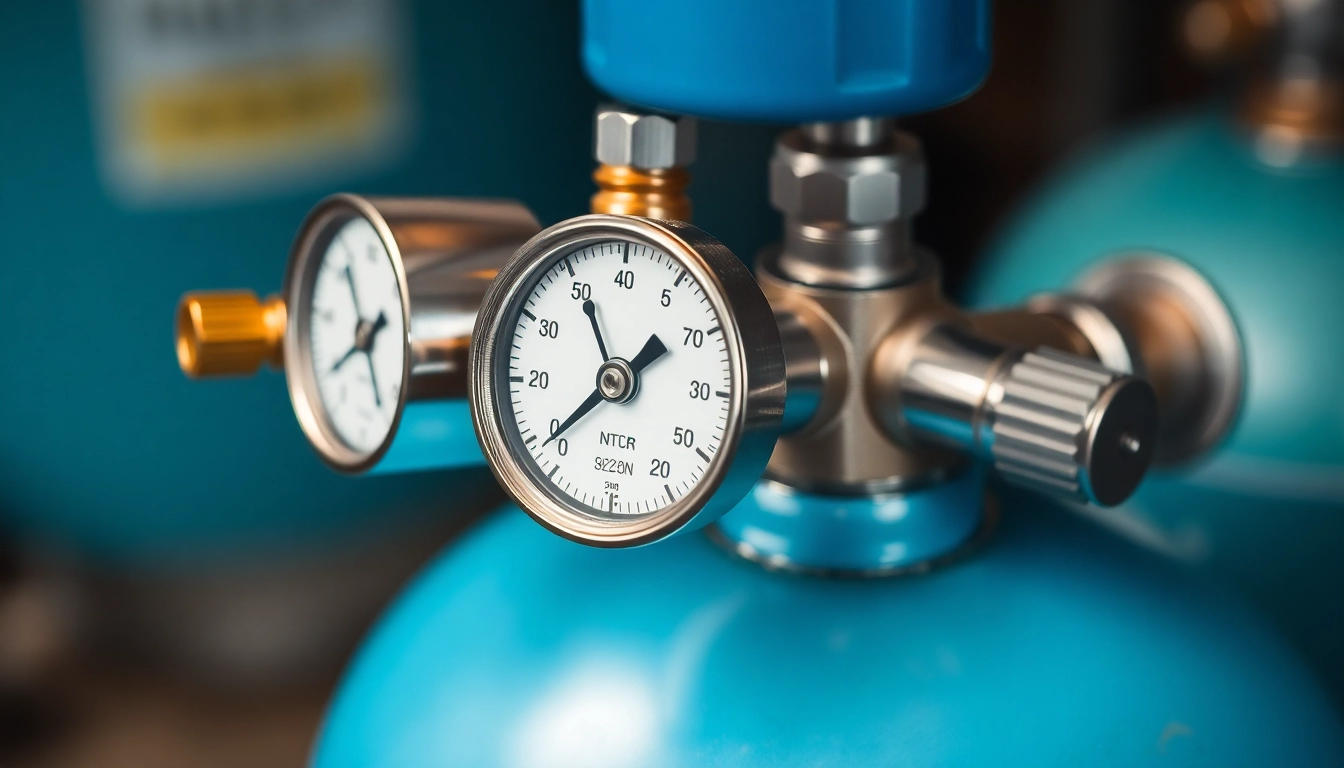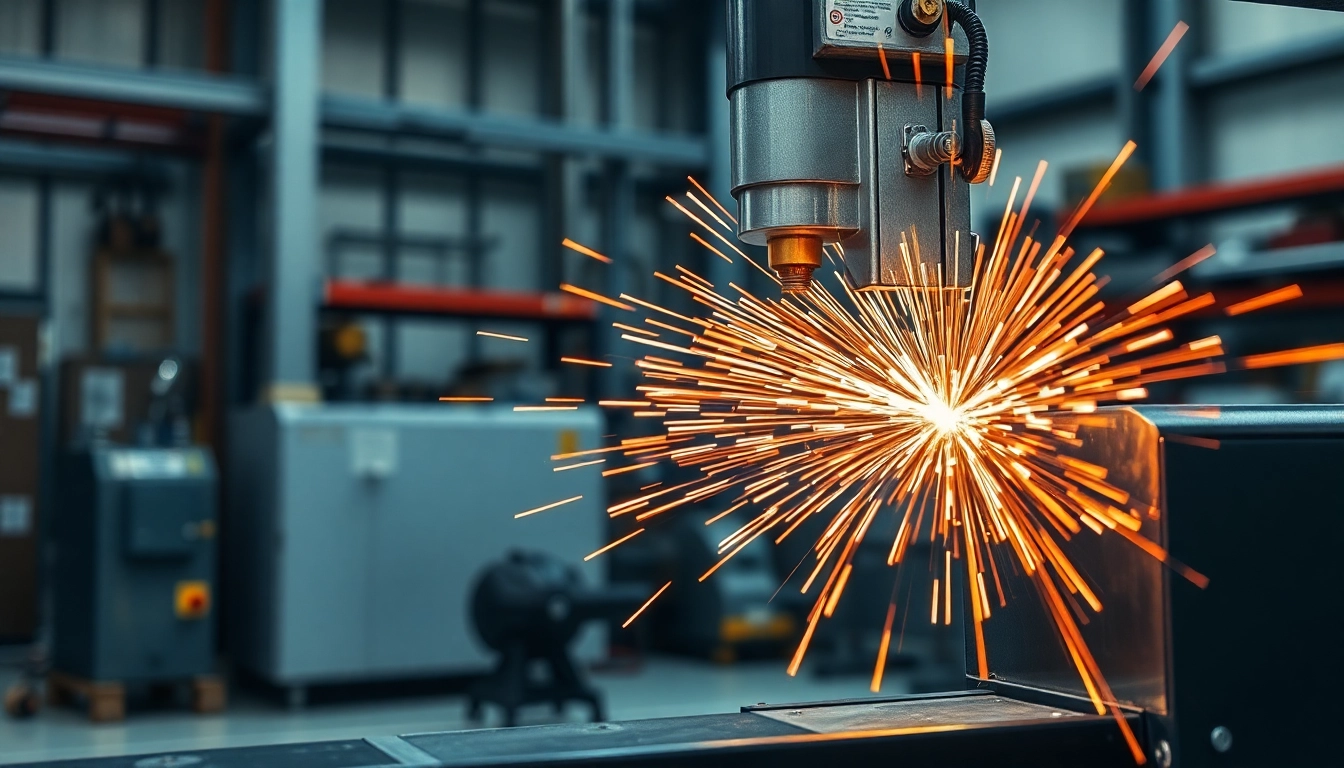Understanding Nitrogen Regulators
What is a Nitrogen Regulator?
A nitrogen regulator is a device that controls the pressure of nitrogen gas flowing from a cylinder or other source. Its primary function is to reduce high gas pressures from the tank, allowing for a safe and efficient delivery at lower pressures suitable for various applications. Nitrogen regulators are widely used in industries ranging from food and beverage carbonation, welding, HVAC, and scientific research, to medical applications where precise control of gas pressure is essential. By using a suitable nitrogen regulator, users can ensure consistent performance and safety in their gas applications.
How Nitrogen Regulators Work
Nitrogen regulators function through a series of components that work together to control gas pressure. At the heart of the regulator is a spring-loaded diaphragm that reacts to the gas pressure, adjusting the valve to either allow more gas to pass or restrict flow as needed. When gas is released from the cylinder, it enters the regulator where the pressure is reduced to a preset level. This pressure can either be adjustable or fixed, depending on the type of regulator being used. The regulated nitrogen then exits the device through an outlet connection, ready for use in various applications.
Common Applications for Nitrogen Regulators
Nitrogen regulators find applications across numerous fields thanks to nitrogen’s inert properties and utility in various environments. Some of the most common applications include:
- Food and Beverage Industry: Employing nitrogen to carbonate soft drinks and beers, ensuring flavor stability while preventing spoilage.
- HVAC Systems: Utilized in pressure testing and purging to maintain equipment efficiency.
- Welding: Assisting in shielded gas applications to protect welds from atmospheric contamination.
- Laboratories and Medical Facilities: Providing controlled environments for experiments and maintaining gas pressures for surgical tools.
Types of Nitrogen Regulators
Single Outlet vs. Dual Outlet Nitrogen Regulators
Nitrogen regulators can be classified based on their outlet configurations. Single outlet nitrogen regulators are suitable for applications requiring a single gas flow point, while dual outlet options provide the flexibility to power multiple devices simultaneously. This is particularly advantageous in industrial settings where diverse equipment may need to operate using the same gas source without compromising performance.
Adjustable vs. Preset Nitrogen Regulators
Adjustable nitrogen regulators allow users to set the output pressure according to specific requirements, making them ideal for varying processes. These regulators provide flexibility, enabling operators to switch between different pressure levels as needed. In contrast, preset regulators have a fixed output pressure, which is beneficial for applications demanding consistent pressure without user intervention. Selecting the right type largely depends on the operational dynamics of the applications.
High-Pressure vs. Low-Pressure Regulators
Nitrogen gas is often stored at high pressures, so choosing between high-pressure and low-pressure regulators is crucial. High-pressure regulators are designed to handle pressures typically above 200 PSI and are essential for tasks that require significant gas flow. Low-pressure regulators, which handle pressures below this threshold, are used in applications like food processing and laboratory work where gentle precision is paramount.
Choosing the Right Nitrogen Regulator
Factors to Consider for Your Application
When selecting a nitrogen regulator, several factors should be taken into account:
- Application Requirements: Understand the specific gas flow and pressure needs of your application.
- Regulator Type: Determine whether a single or dual outlet, adjustable or preset model is most suitable.
- Material Compatibility: Ensure that the materials of the regulator are compatible with the intended application, especially when dealing with reactive substances.
Key Features to Look For
Regulatory features can immensely impact performance. Here are some key features to look for:
- Flow Rate: Check the maximum flow rate the regulator can handle efficiently to ensure it meets your application needs.
- Pressure Gauge: Integrated gauges are beneficial for monitoring current pressure levels, enhancing control during operation.
- Safety Features: Look for built-in safety mechanisms like pressure relief valves to avert hazardous situations in case of overpressurization.
Comparing Brands and Models
Not all manufacturers produce nitrogen regulators of the same quality. Researching differing brands and models will yield insights on durability, reliability, and user reviews. Factors such as warranty, customer support, and ease of maintenance should also play into your decision-making process.
Installation and Maintenance Tips
Step-by-Step Installation Guide
Proper installation of a nitrogen regulator ensures its efficient operation and durability. Follow these key steps:
- Ensure the cylinder valve is closed before beginning installation.
- Connect the regulator to the nitrogen cylinder, ensuring that the connection is tight and secure.
- Attach the outlet hose to the desired equipment, checking that all fittings are secure to prevent leaks.
- Open the cylinder valve slowly and monitor the pressure gauge for accurate readings.
- Adjust the outlet pressure as necessary, depending on the needs of your application.
Routine Maintenance for Optimal Performance
Regular maintenance extends the life of your nitrogen regulator. Here are some essential practices:
- Check for leaks regularly by applying a soapy solution to the connections—bubbles will indicate leaks.
- Clean the regulator’s surface and components with appropriate cleaners to prevent dirt buildup.
- Periodically inspect hose connections and replace any worn or damaged hoses to maintain optimal gas flow.
Troubleshooting Common Issues
Common issues associated with nitrogen regulators may include:
- Fluctuating Pressure: Verify that the cylinder is sufficiently filled and check for blockages within the system.
- Inconsistent Gas Flow: Inspect connections to ensure they are secure and free of obstructions.
- Leakages: If leaks are detected, close the cylinder valve immediately and check all connections for damage or misalignment.
Conclusion and Best Practices
Final Thoughts on Nitrogen Regulator Choices
Selecting the right nitrogen regulator is a critical decision that affects the performance and safety of your applications. Understanding various types, functionalities, and characteristics can guide you in making an informed choice tailored to your needs.
Safety Tips When Using Nitrogen Regulators
Safety is paramount when working with nitrogen regulators. Always adhere to the following practices:
- Wear appropriate PPE, including goggles and gloves, when handling nitrogen equipment.
- Never exceed the maximum pressure rating of your regulator to minimize the risk of rupture or failure.
- Store nitrogen cylinders upright and securely to prevent tipping and damage.
Resources for Further Learning and Support
For additional information and support, consider consulting the following resources:
- Manufacturer’s manuals provide specific details on proper usage and maintenance.
- Industry training courses may offer insight into best practices regarding nitrogen gas applications.
- Online forums and communities can be beneficial for interacting with other professionals and gaining practical advice.


